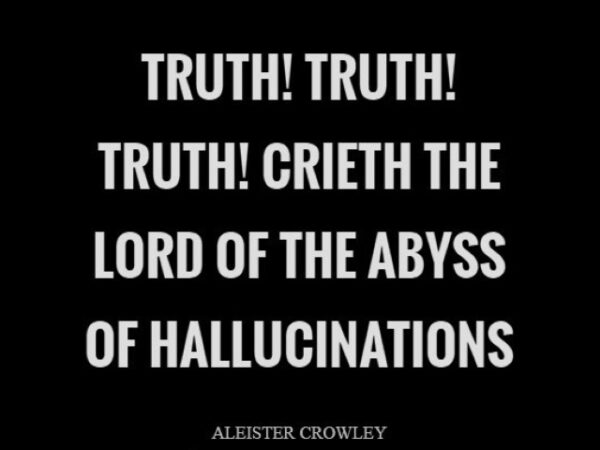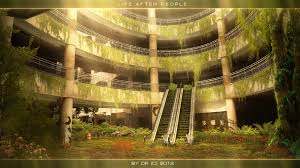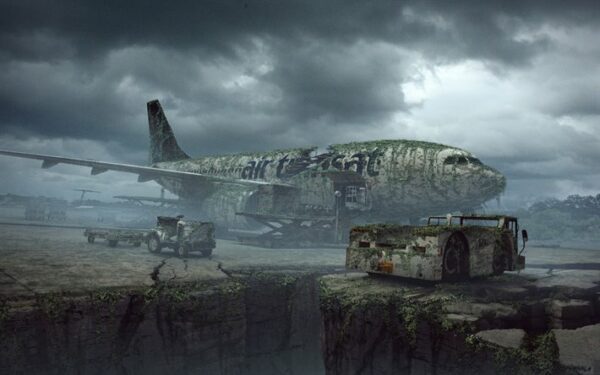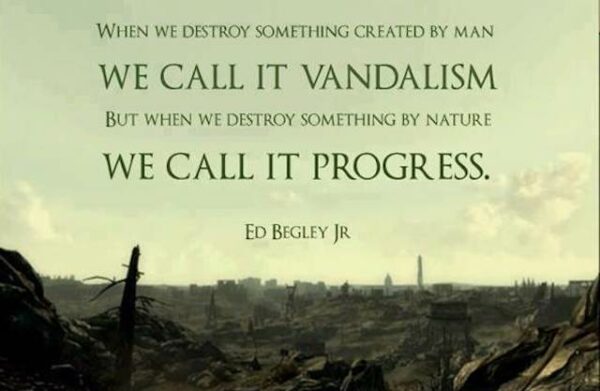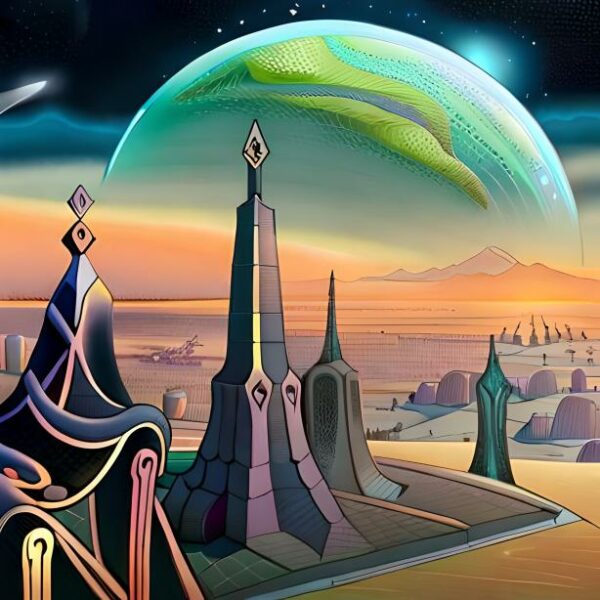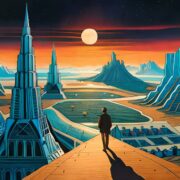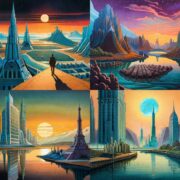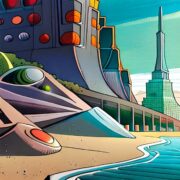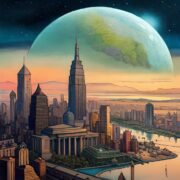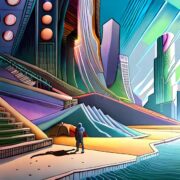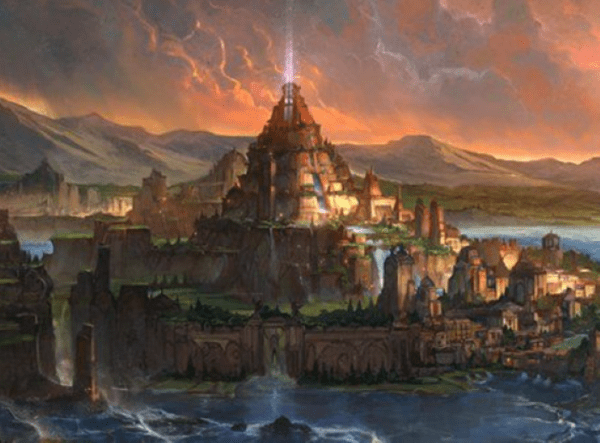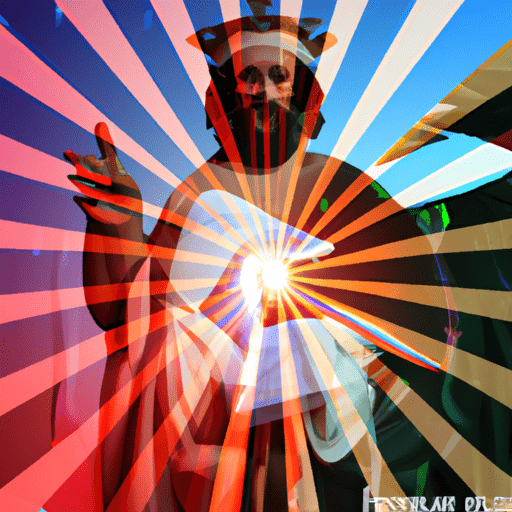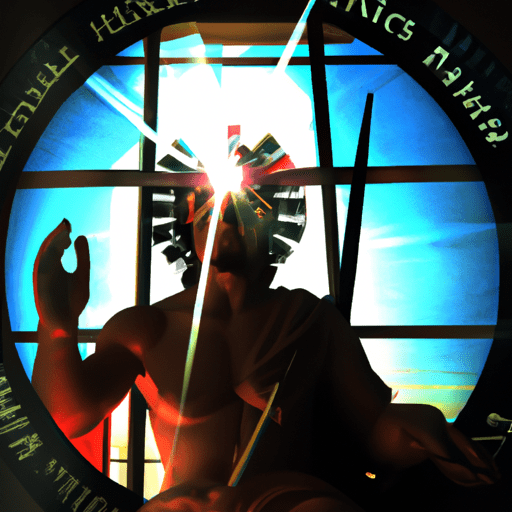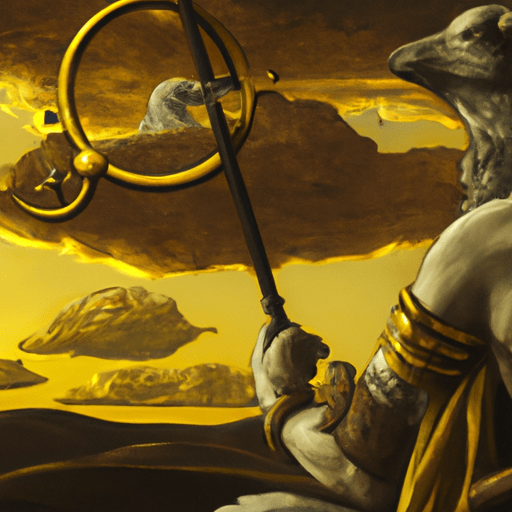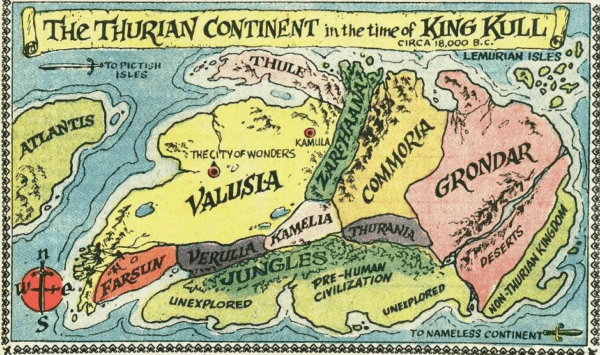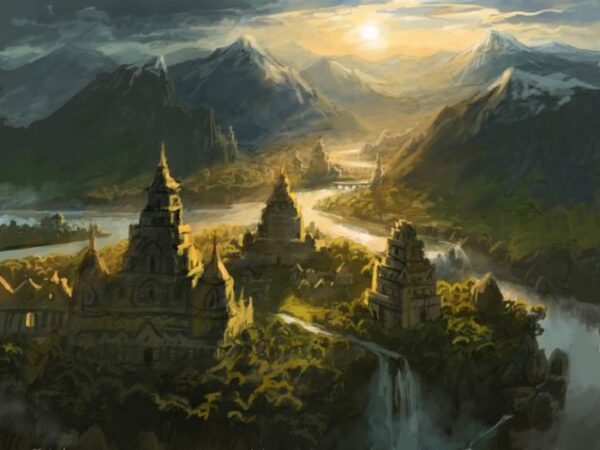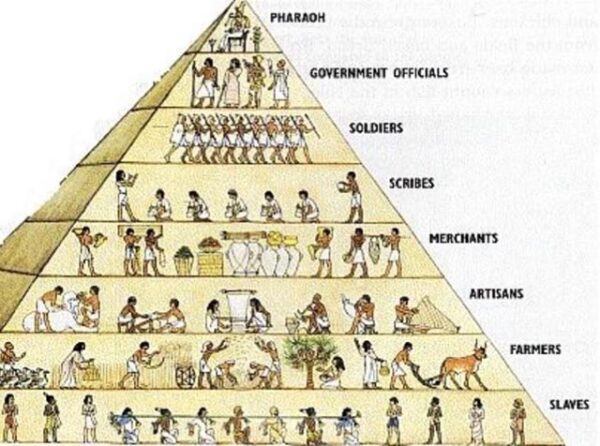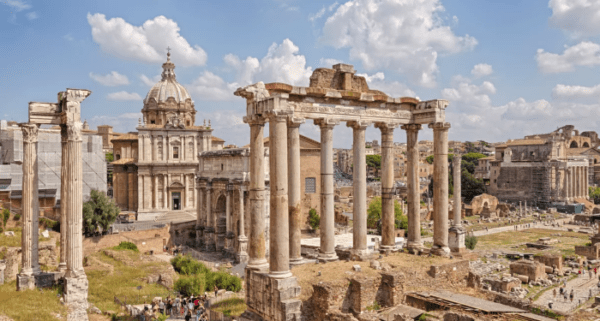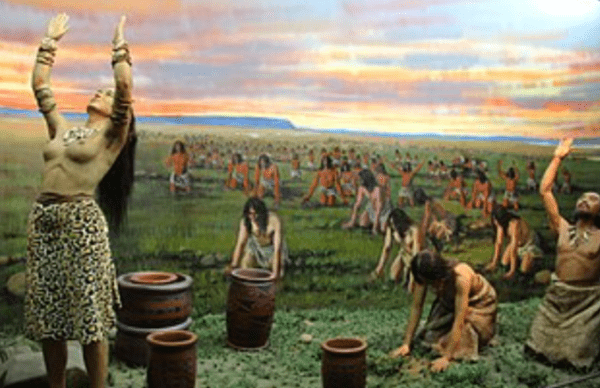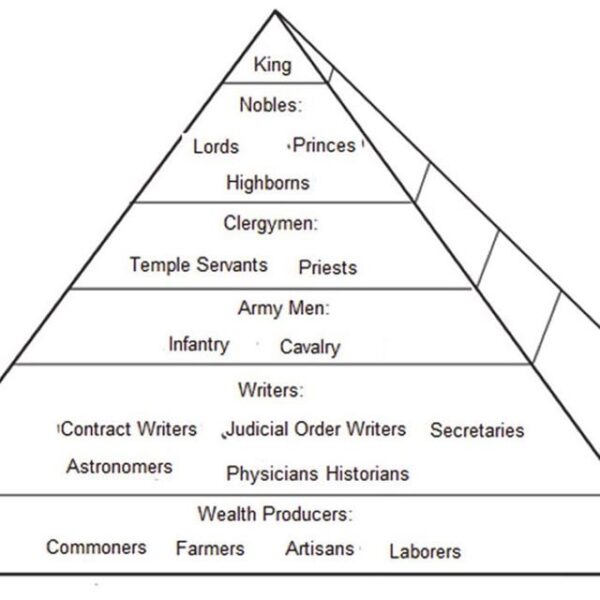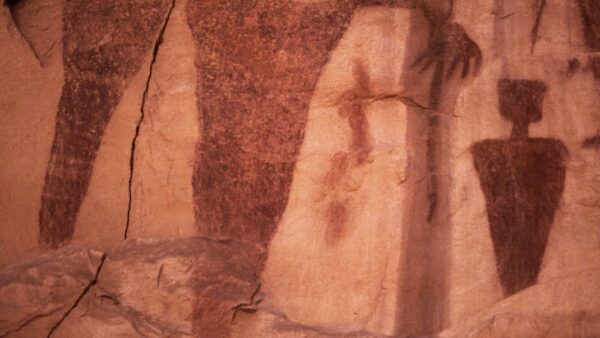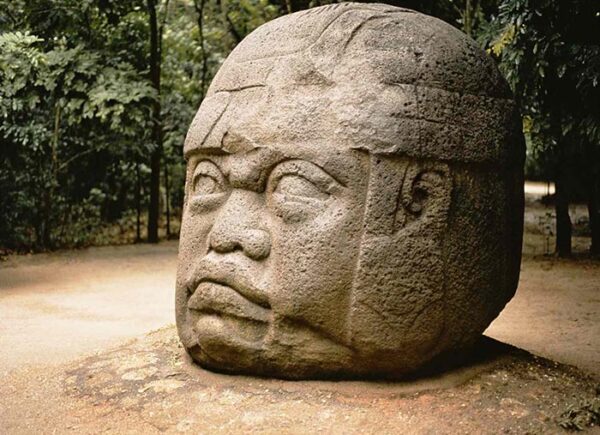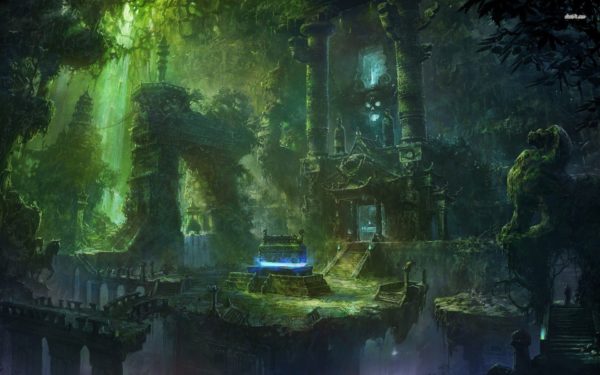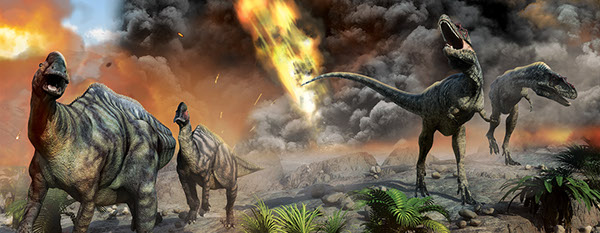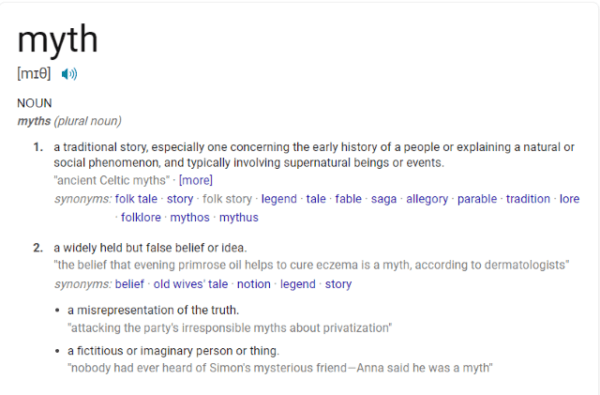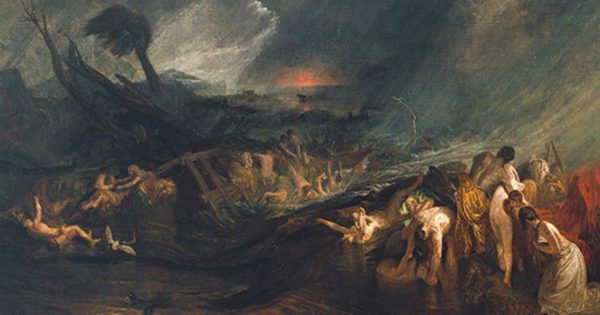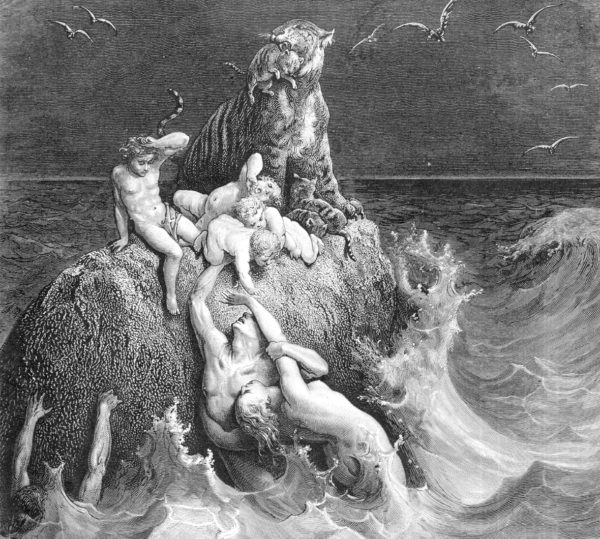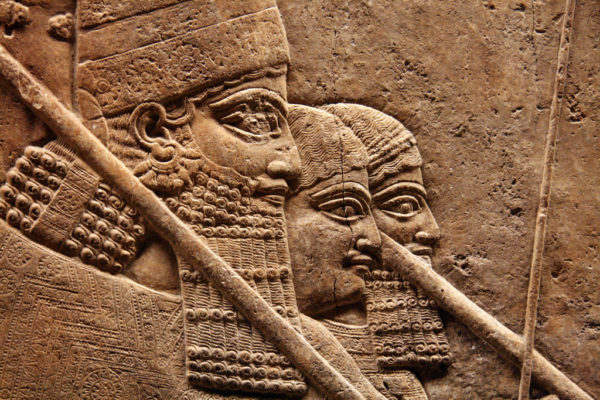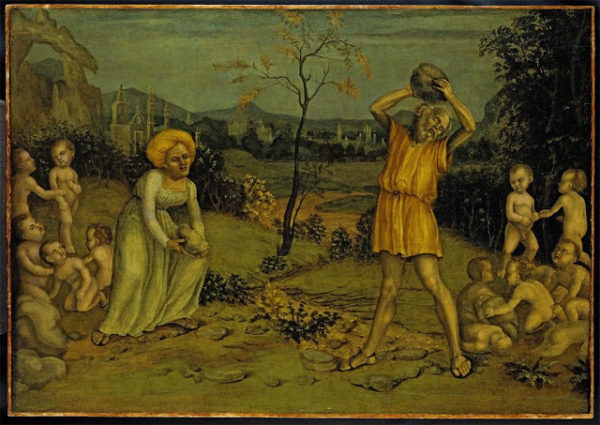The Enigmatic Bestiary of the Himapant Forest in Thai Mythology
The realm of Thai mythology is rich with fantastical creatures, none more captivating than the denizens of the Himapant Forest (ป่าหิมพานต์). This legendary woodland, often depicted as nestled at the foothills of the mythical Mount Meru (เขาพระสุเมรุ), serves as an intermediary zone between the earthly and celestial spheres. Populated by an extraordinary array of animals, many of which are imaginative hybrids, the Himapant Forest and its inhabitants, collectively known as Himapant animals (สัตว์หิมพานต์), hold deep symbolic significance and reflect the intricate tapestry of Thai cultural values. This report aims to provide a comprehensive and detailed account of these mythological animals, exploring their descriptions, origins within Thai cosmology, elemental traits derived from their composite forms, their roles in folklore and legends, and their presence in Thai temple art, with a particular emphasis on the revered Kinnara and Kinnaree. The sheer variety and imaginative construction of these creatures underscore a unique aspect of Thai mythology, where influences from Buddhism, Brahmanism, and indigenous beliefs converge to create a vibrant and multifaceted bestiary. Furthermore, the amalgamation of different animal parts into single entities suggests a sophisticated symbolic language, where each component contributes to the creature’s overall meaning and representation of fundamental elemental forces.
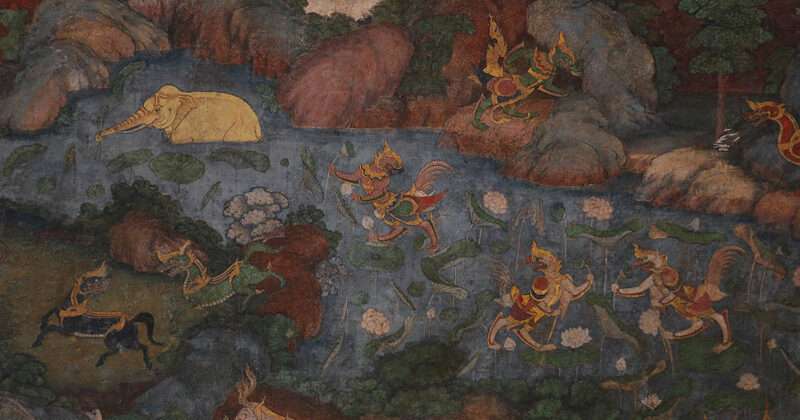
Thai temple mural painting featuring mythical Himapant forest animals
The Concept of the Himapant Forest in Thai Cosmology
In Thai cosmology, the Himapant Forest occupies a crucial position, situated at the base of the majestic Mount Meru, the central axis of the universe in both Buddhist and Hindu traditions. This mythical forest is vividly described in classical Thai literature, most notably in the Traibhumikatha (ไตรภูมิกถา), or “Treatise on the Three Worlds,” a foundational text that outlines the Buddhist understanding of the cosmos. The Traibhumikatha portrays the Himapant as an expansive and enchanted realm teeming with a diverse population of mythical creatures, spirits, and divine beings. The detailed descriptions within this text highlight the forest’s central role in shaping the Thai Buddhist worldview, providing a framework for understanding cosmology and the various realms of existence, including the afterlife. According to traditional beliefs, the Himapant Forest is a realm inaccessible to ordinary human beings, reserved for those with exceptional spiritual merit or magical abilities. Its inhabitants are often endowed with extraordinary magical and supernatural powers, further emphasizing its distinct nature from the mundane human world. The cultural significance of the Himapant Forest extends beyond its literary depictions, as it is frequently represented in Thai art and architecture, particularly within temple complexes and royal institutions. These artistic renditions serve to visualize this sacred and enchanted realm, reinforcing its importance within the Thai cultural imagination. The inaccessibility of the forest to humans reinforces the notion that these creatures belong to a higher, more spiritual plane of existence, further elevating their symbolic importance within Thai mythology.
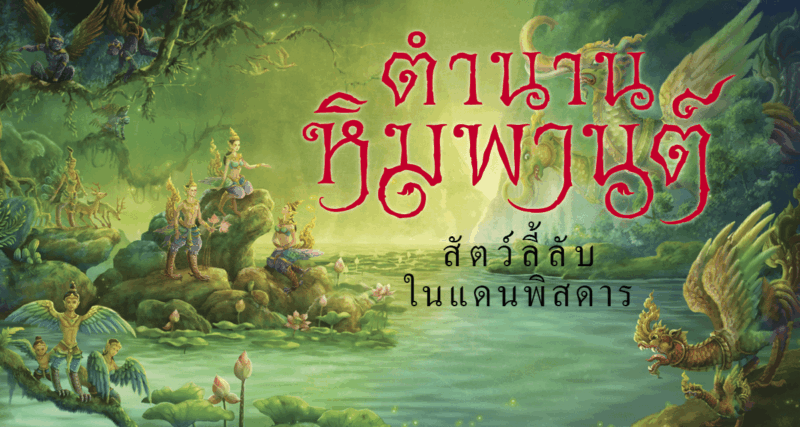
A Compendium of Himapant Animals
The Himapant Forest is home to an astonishing variety of creatures, often categorized based on their primary animal components.
Lion-based Creatures (สัตว์ประเภทสิงห์)
The lion, symbolizing power and majesty, forms the basis for numerous Himapant animals:
- Hemaraj (เหมราช): This creature possesses the body of a lion but is distinguished by its head, which bears a resemblance to either a swan or a crocodile (เหม). The dual interpretation of the “Hema” component as either a swan or a crocodile likely reflects regional variations or an evolution in the creature’s artistic representation.
- Kochasri (คชสีห์): A powerful hybrid, the Kochasri has the body of a lion combined with the head of an elephant, complete with a trunk, ears, and tusks. This amalgamation symbolizes the fusion of strength (lion) and wisdom or intelligence (elephant).
- Singha Panorn (สิงหพานร): This creature exhibits a striking combination, with the lower body of a lion and the upper body of a monkey.
- Several other lion-based creatures exist, each with unique characteristics such as the pure white Kraisorn Rajasri (ไกรสรราชสีห์) with its distinctive red markings , the black, cow-like, herbivorous Kala Sriha (กาฬสีหะ) , the herbivorous Tinna Sriha (ติณสีหะ) with its horse-like hooves , and the tiger-striped, carnivorous Buntu Rajasri (บัณฑุราชสีห์). Further variations include the Kraisorn Jumlang (ไกรสรจำแลง) with a dragon’s head and a lion’s body , the Kraisorn Karwee (ไกรสรคาวี) with a cow’s head and a lion’s body , and the Kraisorn Naga (ไกรสรนาคา) and Kraisorn Paksa (ไกรสรปักษา), blending lion features with those of the Naga and bird respectively. The term Singh (สิงห์) or Singha generally refers to a lion and these figures are commonly found as guardians at temple entrances. Other notable lion hybrids include the scaly Singha Khak Kar (สีหคักคา) , the lion-dragon Seeha Ramangkon (สีหรามังกร) , the human-lion Thep Norasri (เทพนรสีห์) , the bird-lion Tichakorn Jatubod (ฑิชากรจตุบท) , the horned To (โต) , and the lion-elephant Tukka Tor (ทักทอ).
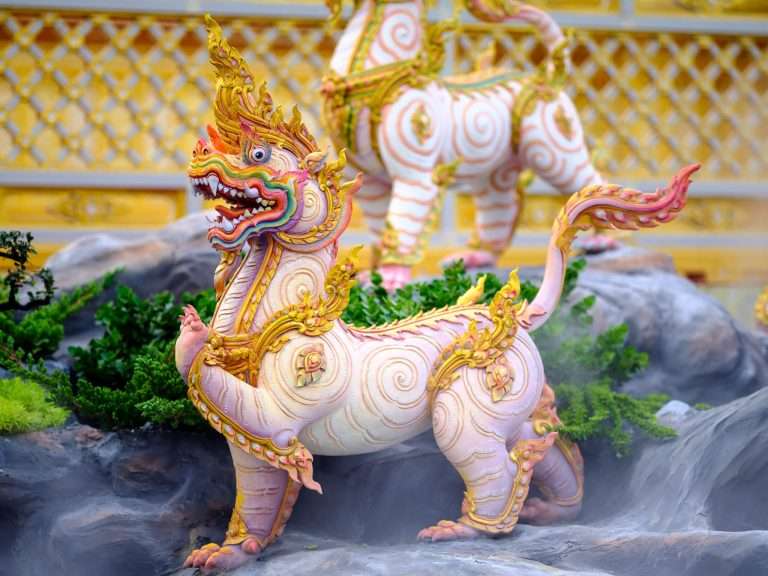
Bird-based Creatures (สัตว์ประเภทนก)
Birds, symbolizing freedom and the celestial realm, are also prominent in the Himapant:
- Kinnara (กินนร) / Kinnaree (กินรี): Perhaps the most well-known, these beings are depicted as half-human and half-bird, often with the lower body resembling a swan or goose. They are celestial beings associated with music, dance, love, and devotion and are believed to watch over humans.
- Nok Hussadiling (นกหัสดีลิงค์): This massive bird possesses the head of an elephant, complete with a trunk and tusks, and sometimes a lion-like head as well.
- Garuda (ครุฑ): A powerful, eagle-like being with a human torso, the Garuda serves as the mount of Vishnu and is the natural enemy of Nagas.
- Other bird-based creatures include the celestial swan Hongsa (หงส์) , the bird with a Naga-like head Nak Paksin (นาคปักษิณ) , the demon-chicken hybrid Asurapaksa (อสุรปักษ์) , the melodious Nok Karawake (นกการเวก) , and various Garuda and Naga combinations like Subun Hayra (สุบรรณเหรา) and Subun Hemaraj (สุบรรณเหมราช). Creatures like Nok Sumpatee (นกสัมพาที) and Sagoon Hayra (สกุณเหรา) also feature bird-like forms with other mythical elements. Further examples include Sagoon Kraisorn (สกุณไกรสร), Paksi Sriha (ปักษิณสีห์), Payak Wenta (พยัคฆ์เวนไตย), Mangkorn Sagunee (มังกรสกุณี), Kabilapaksa (กบิลปักษา), Nok Tantima (นกทัณฑิมา), Apsorn Paksi (อัปสรปักษี), and Asurawayupak (อสุรวายุภักษ์), each with unique combinations of avian and other animal or mythical features.
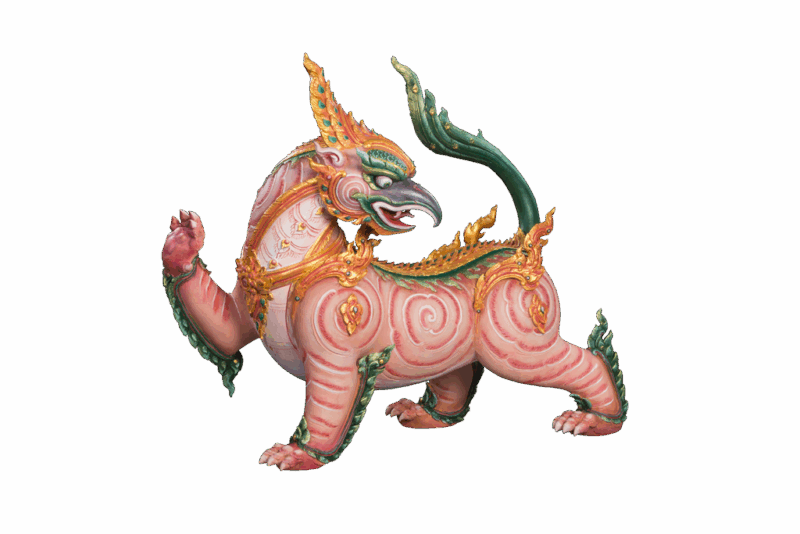
Elephant-based Creatures (สัตว์ประเภทช้าง)
The elephant, revered for its strength and auspiciousness, also appears in hybrid forms:
- Erawan (เอราวัณ): Often depicted as a powerful elephant with multiple heads, symbolizing majesty and strength.
- Wari Kunchorn (วารีกุญชร): This creature combines the body of an elephant with the tail and fins of a fish, representing a connection between land and water.
- Karin Paksa (กรินทปักษา): A striking figure, this creature has the black body of an elephant with the red wings and tail of a bird.
- Other elephant hybrids include Kachapaksin (คชปักษิณ) and Kachapaksindhu (คชปักษิณธุ์), both blending elephant features with those of birds, and Sindhapha Kunchorn (สินธพกุญชร), which has the body of a horse and the head of an elephant.
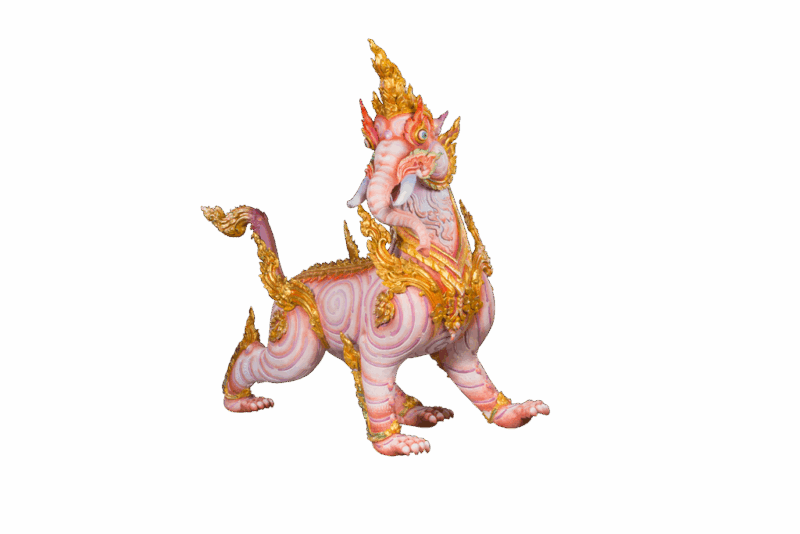
Horse-based Creatures (สัตว์ประเภทม้า)
Horses, representing speed and nobility, also feature in the Himapant bestiary:
- Sindhonanathee (สินธพนัทธี): This creature has the body of a horse and the tail and fins of a fish, symbolizing a connection between land and water travel.
- Durong Kraisorn (ดุรงค์ไกรสร): A regal combination, this creature has the body of a horse and the head of a lion.
- Hemara Ussadorn (เหมราอัศดร): This hybrid features the body of a horse and the head of a bird.
- Durong Paksin (ดุรงค์ปักษิณ): A majestic winged horse, often depicted as pure white with a bird-like tail.
- Other horse-based creatures include Assadorn Wayuphak (อัสดรวิหค) and Hayra Assadon (เหราอัศดร), combining horse features with those of birds and the Hera respectively.
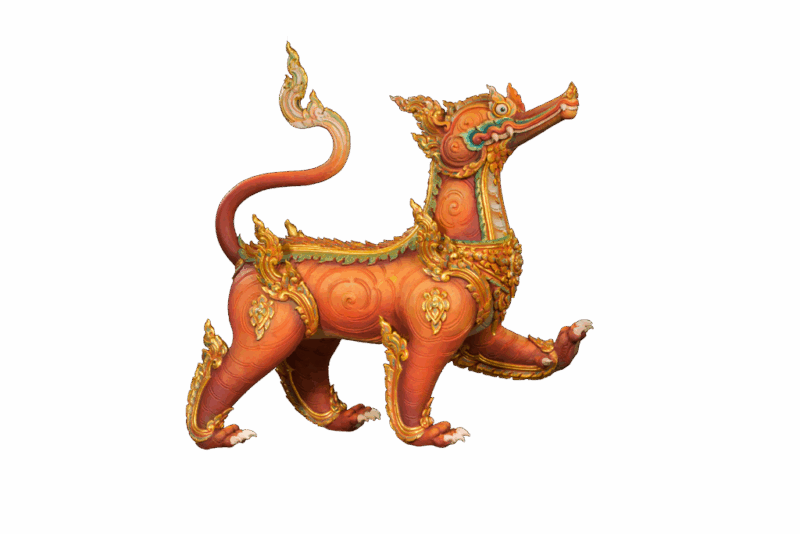
Hemaracha
Serpent/Dragon-based Creatures (สัตว์ประเภทนาค/มังกร)
Serpents and dragons, representing power and the mystical, are also abundant:
- Naga (นาค) / Phaya Nak (พญานาค): These serpentine beings with scales and golden combs are powerful, shapeshifting creatures associated with water and protection, often found guarding temples.
- Hera (เหรา): A Naga-like creature with four dragon legs, horns, and a flame-like comb.
- Makara (มกร): A composite creature with parts of a crocodile, elephant, and serpent.
- Mangkorn (มังกร): The general term for dragon, often depicted as powerful and auspicious.
- Other serpent/dragon hybrids include Nak Paksa (นาคปักษ์), Skunmungkorn (สกุณมังกร), Macha Naka (มัจฉนาคา), and Macha Wan (มัจฉวาฬ), blending serpentine or draconic features with those of birds and fish. The Sringkomatsaya (ศฤงคมัสยา), a fish with horns, also falls into this category.
Other Creatures
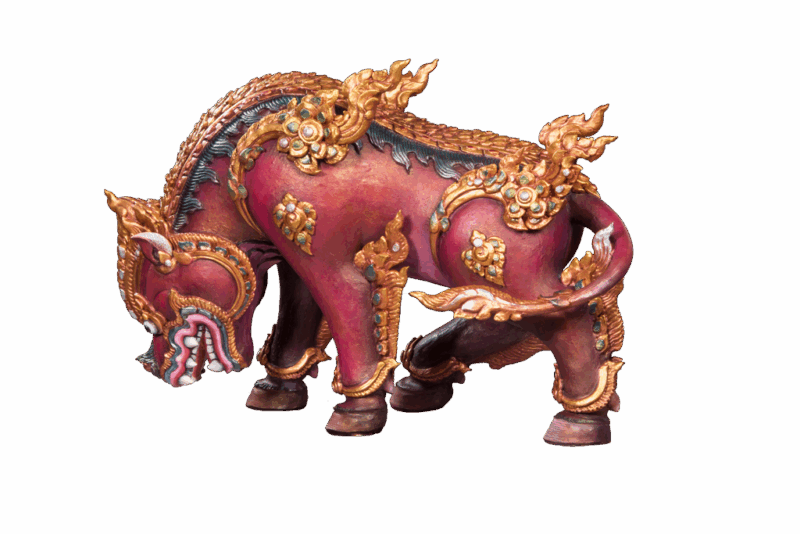
Tin Siha Himapant bull lion
The Himapant Forest also shelters a multitude of other unique beings:
- Mom (มอม): A creature specific to Northern Thai beliefs, the Mom is a composite of various animals and is considered a powerful protector.
- Gilen (กิเลน): The Thai adaptation of the Chinese Qilin, a chimera representing elemental forces.
- Panorn Maruek (พานรมฤค): With the upper body of an ape and the lower body of a deer.
- Suea Peek (เสือปีก): A tiger with bird wings.
- Suea Saming (เสือสมิง): A were-tiger.
- Nang Ngueak (นางเงือก): A mermaid.
- Various other creatures like Pla Kwai (ปลาควาย), Pla Suea (ปลาเสือ), Krabi Pueak (กระบือเผือก), Trorapee / Torapa (ทรพี / ทรพา), Ma Nin Mungkorn (ม้านิลมังกร), and various types of mythical cows and elephants also inhabit this realm. Less clearly defined or less frequently mentioned creatures such as Moom (มูม), Thanthima (ทัณฑิมา), Rajasi (ราชสีห์), Palapharueksarai Ravee (พาฬผรุสร้ายราวี), Thintharasi (ติณราชสีห์), Bandhusuromaruek (บัณฑุสุรมฤคินทร์), Kraisornsingharaj (ไกรสรสิงหราช), Hatsadin (หัสดิน), Nak Assadon (นาคอัสดร), Hemwaree (เหมวารี), Assadon Wihok (อัสดรวิหค), Sihohasen (สีหงเสน), Nakornrachasi (นาคราชสีห์), Teenrachasi (ตีนราชสีห์), and Kraisornrachasi (ไกรษรราชสีห์) further contribute to the rich tapestry of Himapant fauna.
Elemental Associations of Himapant Creatures
The unique combinations of animal forms found in Himapant creatures often symbolize various natural elements, reflecting a deep interconnectedness within the Thai mythological worldview. The presence of wings, for instance, as seen in creatures like the Kinnaree, Garuda, Kraisorn Paksa, and even elephants with wings, typically represents the element of air. Conversely, aquatic creatures or those adorned with fish tails, such as the Wari Kunchorn, Sindhonanathee, and mermaids, embody the element of water. Earth-bound creatures characterized by their strong legs or hooves, including lions, elephants, and horses, are generally associated with the element of earth. In some instances, creatures like the Gilen are depicted with fiery attributes, linking them to the element of fire.

Consider the example of a winged elephant with a fish tail. The wings would symbolize air, the elephant’s form would represent earth, and the fish tail would signify water. This deliberate combination of elemental symbols within a single creature likely contributes to its specific symbolic meaning and perceived power within the mythology. It suggests a holistic understanding of nature, where these mythical beings embody the interconnectedness of various natural forces. The specific arrangement of these elements in a creature’s form might further denote its particular role or the types of powers it possesses within the mythological narratives.
| Thai Name | Primary Animal Group | Composite Parts |
| Hemaraj (เหมราช) | Lion | Lion body, swan or crocodile head |
| Kochasri (คชสีห์) | Lion | Lion body, elephant head |
| Singha Panorn (สิงหพานร) | Lion | Lion lower body, monkey upper body |
| Kraisorn Rajasri (ไกรสรราชสีห์) | Lion | White lion with red markings |
| Kala Sriha (กาฬสีหะ) | Lion | Black, cow-like body |
| Tinna Sriha (ติณสีหะ) | Lion | Cow-like body, horse hooves |
| Buntu Rajasri (บัณฑุราชสีห์) | Lion | Yellow, black stripes, tiger-like body |
| Kraisorn Jumlang (ไกรสรจำแลง) | Lion | Lion body, dragon head |
| Kraisorn Karwee (ไกรสรคาวี) | Lion | Lion body, cow head, horse tail |
| Kraisorn Naga (ไกรสรนาคา) | Lion | Lion body, Naga head and tail |
| Kraisorn Paksa (ไกรสรปักษา) | Lion | Lion body, bird head and wings |
| Singh (สิงห์) / Singha | Lion | Lion |
| Singha Khak Kar (สีหคักคา) | Lion | Lion head, scaly body, elephant legs |
| Seeha Ramangkon (สีหรามังกร) | Lion | Lion body, dragon head |
| Thep Norasri (เทพนรสีห์) | Lion | Lion lower body, human upper body |
| Tichakorn Jatubod (ฑิชากรจตุบท) | Lion | Lion lower body, bird-like upper body |
| To (โต) | Lion | Lion-like, two horns |
| Tukka Tor (ทักทอ) | Lion | Lion lower body, elephant head |
| Kinnara/Kinnaree (กินนร/กินรี) | Bird | Human upper body, bird lower body (swan/goose) |
| Nok Hussadiling (นกหัสดีลิงค์) | Bird | Bird body, elephant head (sometimes lion-like head) |
| Garuda (ครุฑ) | Bird | Human upper body, eagle body |
| Hongsa (หงส์) | Bird | Swan |
| Nak Paksin (นาคปักษิณ) | Bird | Bird body, Naga head |
| Asurapaksa (อสุรปักษ์) | Bird | Chicken body, demon head, chest, hands |
| Nok Karawake (นกการเวก) | Bird | Bird |
| Subun Hayra (สุบรรณเหรา) | Bird | Garuda body, Naga head |
| Subun Hemaraj (สุบรรณเหมราช) | Bird | Garuda body and tail, Hemaraj head |
| Nok Sumpatee (นกสัมพาที) | Bird | Bird |
| Sagoon Hayra (สกุณเหรา) | Bird | Bird body, Hera head and tail |
| Sagoon Kraisorn (สกุณไกรสร) | Bird | Lion body, bird head and wings (sometimes wingless) |
| Paksi Sriha (ปักษิณสีห์) | Bird | Lion body, bird head |
| Payak Wenta (พยัคฆ์เวนไตย) | Bird | Bird body, tiger head |
| Mangkorn Sagunee (มังกรสกุณี) | Bird | Bird body, dragon head |
| Kabilapaksa (กบิลปักษา) | Bird | Monkey upper body, bird lower body |
| Nok Tantima (นกทัณฑิมา) | Bird | Garuda body, bird head |
| Apsorn Paksi (อัปสรปักษี) | Bird | Human body, bird wings |
| Asurawayupak (อสุรวายุภักษ์) | Bird | Eagle body, Yaksha face |
| Erawan (เอราวัณ) | Elephant | Elephant, multiple heads |
| Wari Kunchorn (วารีกุญชร) | Elephant | Elephant body, fish tail and fins |
| Karin Paksa (กรินทปักษา) | Elephant | Black elephant body, red bird wings and tail |
| Kachapaksin (คชปักษิณ) | Elephant | Garuda body, elephant head, Hongsa feathers and tail |
| Kachapaksindhu (คชปักษิณธุ์) | Elephant | Elephant head, bird wings, fish tail |
| Sindhapha Kunchorn (สินธพกุญชร) | Elephant | Horse body, elephant head |
| Sindhonanathee (สินธพนัทธี) | Horse | Horse body, fish tail and fins |
| Durong Kraisorn (ดุรงค์ไกรสร) | Horse | Horse body, lion head |
| Hemara Ussadorn (เหมราอัศดร) | Horse | Horse body, bird head |
| Durong Paksin (ดุรงค์ปักษิณ) | Horse | White winged horse, bird-like tail |
| Assadorn Wayuphak (อัสดรวิหค) | Horse | Horse body, bird head and neck |
| Hayra Assadon (เหราอัศดร) | Horse | Horse body, Hera head |
| Naga (นาค) / Phaya Nak (พญานาค) | Serpent/Dragon | Serpent with scales and golden comb |
| Hera (เหรา) | Serpent/Dragon | Naga-like, four dragon legs, horns, flame-like comb |
| Makara (มกร) | Serpent/Dragon | Crocodile, elephant, serpent parts |
| Mangkorn (มังกร) | Serpent/Dragon | Dragon |
| Nak Paksa (นาคปักษ์) | Serpent/Dragon | Bird body, Naga head |
| Skunmungkorn (สกุณมังกร) | Serpent/Dragon | Bird head, dragon body and tail |
| Macha Naka (มัจฉนาคา) | Serpent/Dragon | Fish body, Naga head |
| Macha Wan (มัจฉวาฬ) | Serpent/Dragon | Large fish |
| Sringkomatsaya (ศฤงคมัสยา) | Serpent/Dragon | Fish with horns |
| Mom (มอม) | Other | Composite of dog, cat, gecko, lizard, monkey, tiger, etc. |
| Gilen (กิเลน) | Other | Composite of various animals |
| Panorn Maruek (พานรมฤค) | Other | Monkey upper body, deer lower body |
| Suea Peek (เสือปีก) | Other | Tiger body, bird wings |
| Suea Saming (เสือสมิง) | Other | Human transforming into a tiger |
| Nang Ngueak (นางเงือก) | Other | Human upper body, fish lower body |
| Pla Kwai (ปลาควาย) | Other | Buffalo fish |
| Pla Suea (ปลาเสือ) | Other | Tiger fish |
| Krabi Pueak (กระบือเผือก) | Other | White buffalo |
| Trorapee / Torapa (ทรพี / ทรพา) | Other | Mythical cow/bull |
| Ma Nin Mungkorn (ม้านิลมังกร) | Other | Half-horse, half-dragon |
| Ko U-Suparaj (โคอุสุภราช) | Other | Noble cow with white spots |
| Ko Prueksa Kawain (โคพฤกษกวาริน) | Other | Cow torso, fish tail |
| Ko A-Supa Paksin (โคอศุภปักษิณ) | Other | Blue cow with wings and bird tail |
| Paksa Kawi (ปักษาคาวี) | Other | Cream-colored cow with bird tail and horns |
| Chattan Hudtee (ฉัททันต์หัตถี) | Other | White elephant with red markings and six tusks |
| Hem Hudtee (เหมหัตถี) | Other | Golden elephant with super strength |
| Karinta Paksa (กรินทปักษา) | Other | Black elephant with red ears and bird tail |
| Kunchon Waree (กุญชรวารี) | Other | Elephant torso, fish tail |
| Mareet (มารีศ) | Other | Half-giant, half-deer |
| Upsorn Sriha (อัปสรสีหะ) | Other | Half-human, half-deer/lion |
| Loto (โลโต) | Other | Brown creature with clawed feet |
| Sinkh (สิงค์) | Other | Light purple lion-like creature |
| To Thep Ussadorn (โตเทพอัสดร) | Other | Horse-like creature |
| Ngai Sai (งายไส) | Other | Horse-like creature |
| Moom (มูม) | Other | Unknown |
| Thanthima (ทัณฑิมา) | Other | Unknown |
| Rajasi (ราชสีห์) | Other | Lion |
| Palapharueksarai Ravee (พาฬผรุสร้ายราวี) | Other | Possibly lion-like |
| Thintharasi (ติณราชสีห์) | Other | Lion eating grass |
| Bandhusuromaruek (บัณฑุสุรมฤคินทร์) | Other | Lion eating meat |
| Kraisornsingharaj (ไกรสรสิงหราช) | Other | Powerful lion with red tail, feet, and mouth |
| Hatsadin (หัสดิน) | Other | Two-legged, lion-like head, elephant trunk and tusks, bird body |
| Nak Assadon (นาคอัสดร) | Other | Horse body, Naga head and scales |
| Hemwaree (เหมวารี) | Other | Hemaraj head, body with fins and fish tail |
| Assadorn Wihok (อัสดรวิหค) | Other | Horse body, bird head and neck |
| Sihohasen (สีหงเสน) | Other | Lion-like with crown |
| Nakornrachasi (นาคราชสีห์) | Other | Lion with Naga features |
| Teenrachasi (ตีนราชสีห์) | Other | Lion with bird feet |
| Kraisornrachasi (ไกรษรราชสีห์) | Other | Lion |
The Majestic Kinnara and Kinnaree
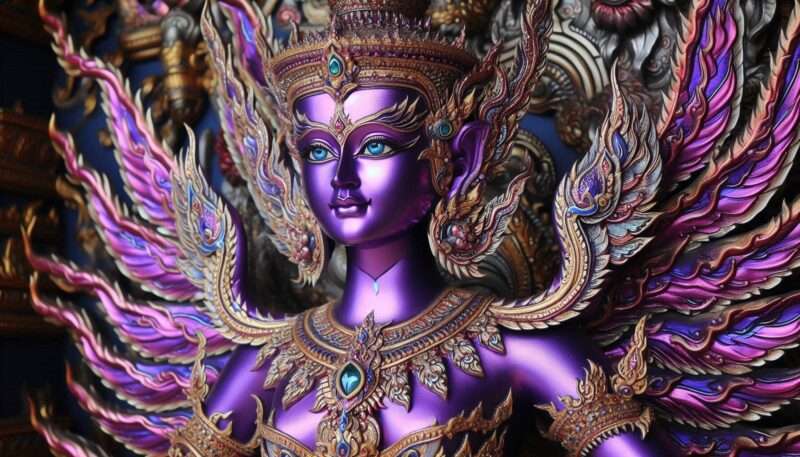
Kinnaree
The Kinnara (male) and Kinnaree (female) stand out as particularly revered figures within the Himapant bestiary. Their appearance is typically described as having the upper body of a beautiful, often angelic, human and the lower body of a bird, most commonly a swan or goose, complete with elegant wings. Originating from both Hindu and Buddhist mythology, they are believed to inhabit the majestic Himalayas and the mythical Himapant Forest. These celestial beings are strongly associated with music, dance, love, and unwavering devotion, often depicted in graceful and harmonious poses. They are considered benevolent creatures, often watching over the well-being of humans and offering assistance in times of trouble.
One of the most famous Kinnaree in Thai folklore is Manora (มโนราห์), the heroine of the Sudhana Jataka tale. Her story, which recounts her capture by a human prince, their love, separation, and eventual reunion, is a beloved narrative that exemplifies themes of love, separation, and the enduring power of true affection, reflecting common narrative patterns found in folklore. Manora is considered a symbol of ideal beauty and grace and has inspired the classical Southern Thai dance known as the Manora dance. Variations in the depiction of Kinnara and Kinnaree exist across Southeast Asia, with different cultures like Cambodia and Burma having their own unique interpretations and names for these beings. This pan-Southeast Asian presence underscores a shared cultural heritage and the widespread influence of these mythological figures throughout the region.
Himapant Animals in Thai Folklore and Legends
Himapant animals frequently appear in Thai folklore and legends, often playing significant roles in Jataka tales, which recount the previous lives of the Buddha, and other Buddhist narratives. In these stories, the creatures often serve moral or symbolic purposes, illustrating Buddhist principles or embodying specific virtues and vices. For instance, the tale of Kinnaree Manora in the Sudhana Jataka highlights themes of love, devotion, and perseverance. Beyond religious narratives, Himapant animals also feature in local legends and folk stories, such as the Mom, a protector spirit in Northern Thailand. These folk tales often serve as a means of transmitting cultural values, beliefs, and moral lessons from one generation to the next. The specific characteristics and behaviors attributed to these creatures within the narratives often reflect their symbolic associations, further enriching the cultural understanding of these mythical beings.
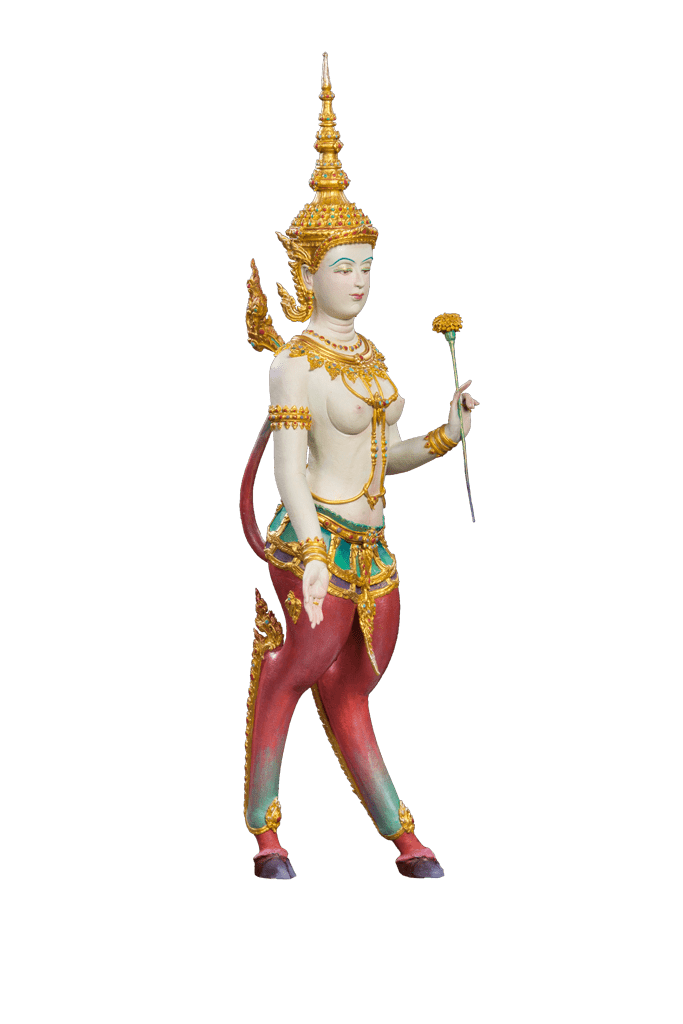
The Presence of Himapant Animals in Thai Temples
Depictions of Himapant animals are a ubiquitous feature in Thai temples, where they manifest as statues and other forms of temple art. Statues of lions (Singha), Nagas, Kinnaree, Garuda, and elephants are frequently placed at the entrances and within the temple grounds, serving as guardians and protectors of these sacred spaces. Their presence also evokes the mythical Himapant Forest within the temple environment, creating a sense of pilgrimage to this enchanted realm for worshippers. Furthermore, Himapant animals are often depicted in intricate temple murals, carvings, and other decorative elements, contributing to the overall artistic and symbolic richness of Thai religious architecture.
The prominent display of these creatures in Thai temples underscores their deep integration into the religious and cultural fabric of Thai society. The specific animals chosen for temple decoration likely reflect their perceived protective powers or their strong associations with Thai mythology and folklore. For instance, the lion (Singha) is revered for its bravery and strength, while the Naga is often depicted as a serpent-like creature with supernatural powers. The Kinnaree, a mythical creature with the body of a woman and the head of a swan, is associated with beauty and grace, while the Garuda, a bird-like creature with human features, is revered for its speed and agility.
Notable examples of these creatures can be found in the golden figures of Kinnaree and Garuda adorning Wat Phra Kaew in Bangkok. These exquisite works of art showcase the skill and craftsmanship of Thai artisans, who have carefully crafted each detail to create a sense of wonder and awe. The intricate carvings and murals that adorn the temples also provide a glimpse into the rich cultural heritage of Thailand, revealing a deep understanding of the natural world and the spiritual realm. By incorporating these creatures into their temple art, the people of Thailand have created a unique and captivating visual language that continues to inspire and delight visitors from around the world.
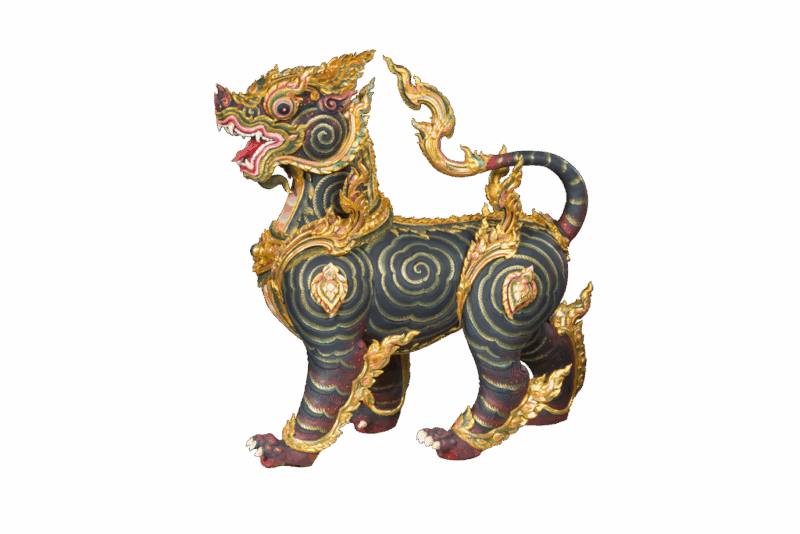
Conclusion: The Enduring Significance of Himapant Animals in Thai Cultural Heritage
In conclusion, the Himapant animals of Thai mythology represent a vibrant and diverse bestiary that reflects the rich imaginative and spiritual heritage of Thailand. These composite creatures, dwelling in the mythical forest at the foot of Mount Meru, embody a unique blend of animal characteristics, each contributing to their symbolic meaning and elemental associations. From the majestic Kinnara and Kinnaree, symbols of beauty, love, and devotion, to the powerful Nagas and Garudas, guardians of temples and deities, these animals play significant roles in Thai cosmology, folklore, art, and religious beliefs. Their presence in literature, legends, and as prominent figures in temple art underscores their enduring legacy as a testament to the creativity and spiritual depth of Thai culture. The intricate details and symbolic richness of these Himapant creatures continue to fascinate and inspire, serving as a powerful reminder of the inter-connectedness between the natural and supernatural realms in Thai tradition.

